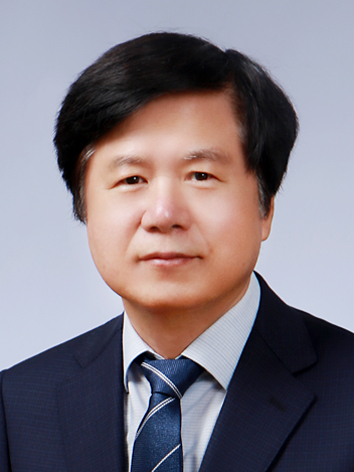[Opinion] Gallium Nitride: The Promising Successor to Silicon—From Light to Power and RF
sigetronics
2025-05-20
浏览数 282
Deok-ho Cho, EVP & Head of R&D, SigetronicsGallium (Ga) is a unique element that becomes a liquid metal at just 30°C. When combined with metals like aluminum, it infiltrates and dissolves them in a way that seems almost magical. When gallium bonds with nitrogen, it forms gallium nitride (GaN), a compound semiconductor that has risen to prominence in the era of the Fourth Industrial Revolution.
GaN semiconductors possess a direct bandgap and a wide bandgap—distinct physical properties that differentiate them from traditional silicon semiconductors. These features enable superior performance in high-voltage, high-temperature environments and offer exceptional efficiency in converting electricity into light. As such, GaN is now the dominant material used to manufacture LEDs and laser diodes (LDs) that emit full-spectrum RGB (red, green, blue) light. In fact, GaN powers the vast majority of modern LED displays and lighting solutions. It has also become indispensable in power control systems, RF (radio frequency) communications, and radar—fields where no other material can match its performance.
GaN’s growing strategic importance was underscored in August 2023, when China—responsible for 94% of global gallium production—implemented export restrictions in response to U.S. semiconductor sanctions. The United States later followed with an export ban of its own. These geopolitical moves have raised red flags in the global supply chain, particularly for sectors reliant on GaN-based products like LED lighting, displays, high-efficiency power devices, LiDAR, and military and civilian radar systems.
According to market analysts (P&S Intelligence, Precedence Research), the global semiconductor market is projected to reach USD 929 billion by 2030 (CAGR 7.54%), with GaN semiconductors accounting for USD 72.8 billion (CAGR 18.2%), or 7.8% of the total. These figures reinforce GaN's rise as the most promising successor to silicon—not just technologically, but economically.
Back in 1997, when GaN research began in earnest, it was already anticipated that the material could cover two-thirds of the visible light spectrum with green and blue emissions. Now, nearly 28 years later, red emission is also achievable, suggesting that GaN may soon span 99% of the visible spectrum. This underscores the belief that scientific progress is a slow, yet relentless evolution.
Beyond optical applications, GaN’s high efficiency, high voltage tolerance, high frequency, and high-temperature performance are accelerating its adoption in power and RF semiconductors. Power devices based on GaN now operate across a range from several tens of volts up to 1.2 kV, while RF devices are widely used in active electronically scanned array (AESA) radar operating in the X-band and across sub-GHz to 100 GHz frequencies. Still, reliability concerns remain, due to challenges like crystal defects, unknown traps, low-frequency noise, leakage current, and dielectric breakdown. Continued R&D investment is essential to overcome these barriers and realize GaN's full potential.
In the LED sector, companies like Nichia, Seoul Semiconductor, and OSRAM maintain a visible presence, with Korean firms holding a modest market share. However, the power and RF GaN markets are dominated by global players such as EPC, Toshiba (Transphorm), Infineon (GaN Systems), Navitas, STMicroelectronics, and TSMC, as well as China’s rapidly advancing Innoscience.
In GaN RF, major names like Wolfspeed (Cree), Teledyne, MACOM, NXP, Qorvo, Mitsubishi, UMS, and WIN Semiconductors lead the field. In Korea, companies like Samsung Electronics, DB HiTek, Sigetronics, and WAVIS are actively developing GaN technologies and exploring mass production. Meanwhile, GaN epitaxial wafers—crucial raw materials—are being developed by venture companies such as LND Electronics, Waveload, and Apro, along with public institutions like the Korea Nanotechnology Research Center (KANC) and the Electronics and Telecommunications Research Institute (ETRI).
Despite GaN’s increasing role in core aerospace and defense components, domestic commercialization in the power and RF sectors remains severely underdeveloped. The primary reason lies in the lack of a strategic national R&D roadmap and limited budget allocations. While it may be argued that Korea has invested significantly in this field, funding has largely been fragmented and insufficient.
One may ask: How much investment is needed to build a competitive GaN power and RF industry in Korea? To establish a globally viable GaN ecosystem—including 6-inch and larger fabs, foundries, and small-scale production—a national investment of approximately KRW 1 trillion would be necessary.
While the Korean government has launched various university-based semiconductor research center programs costing hundreds of billions of won, these efforts are far from sufficient. Considering that semiconductors account for 25% of Korea’s industrial output, the urgency to scale investment becomes even more evident.GaN semiconductors are poised to become a key pillar of future industries, particularly in the defense sector, yet national interest has been sorely lacking. Immediate investments are needed to establish a comprehensive ecosystem—spanning IDMs, foundries, and fabless ventures—before it’s too late.
— By Deok-ho Cho, Executive Vice President and Head of R&D Center, Sigetronics (dhcho@sigetronics.com)
ETNews, hskim@etnews.com, May 19, 2025


